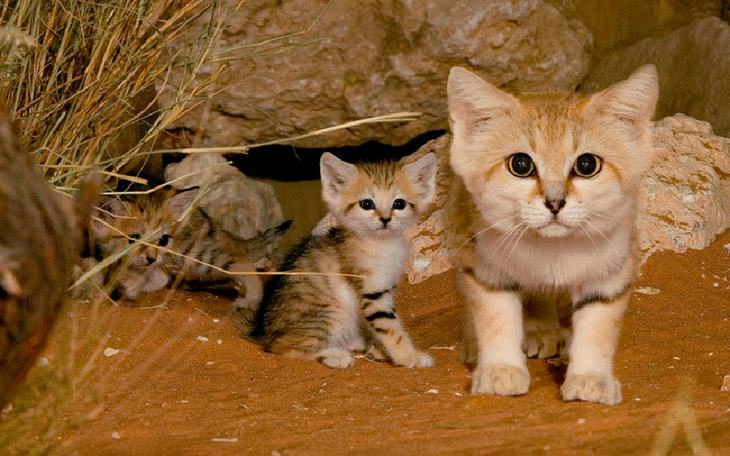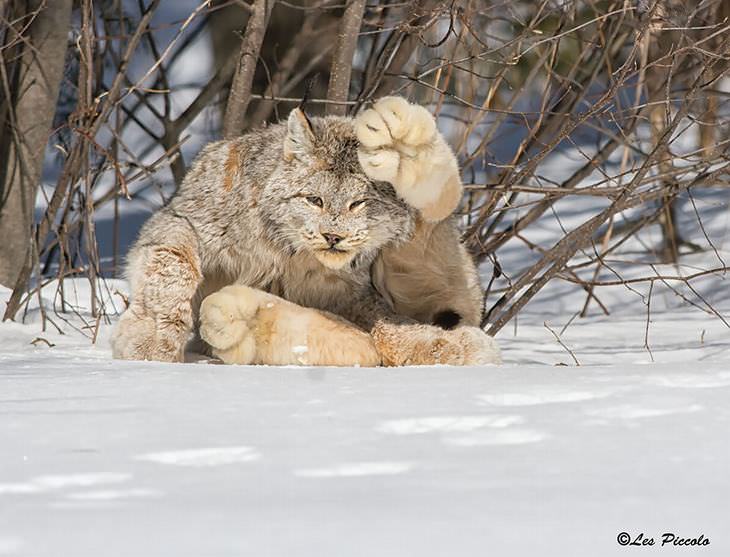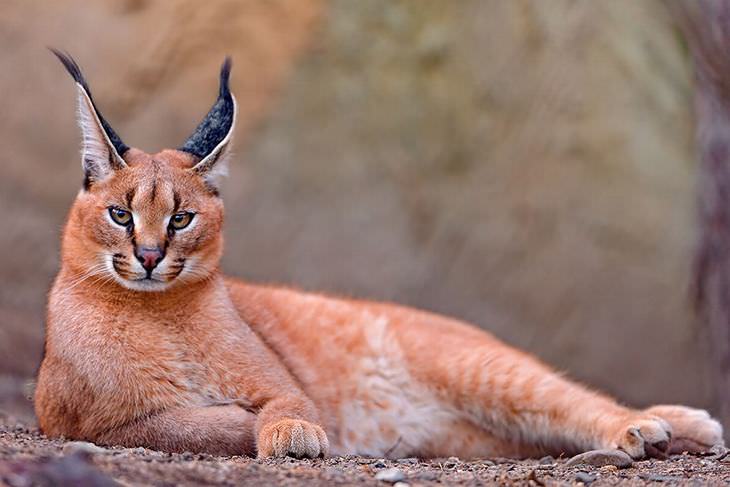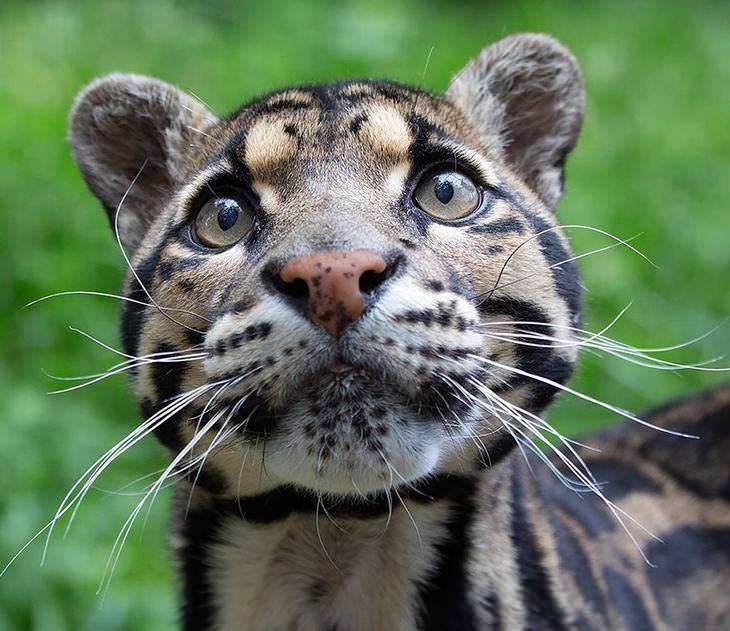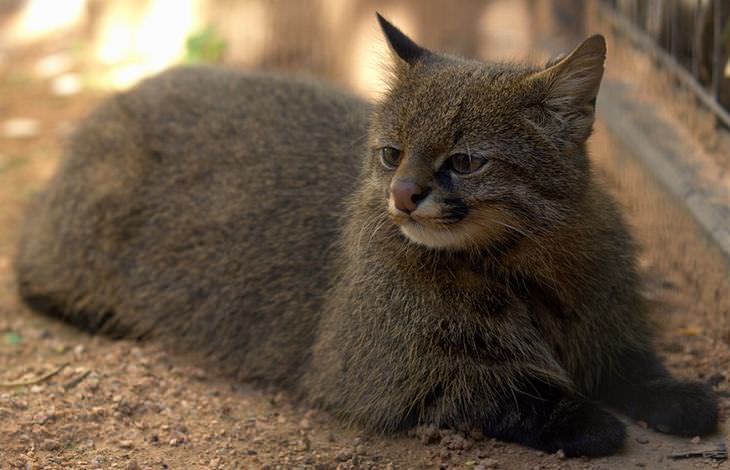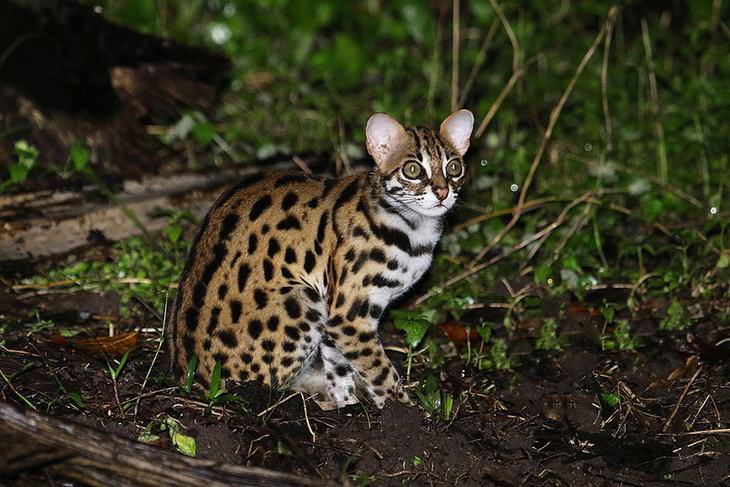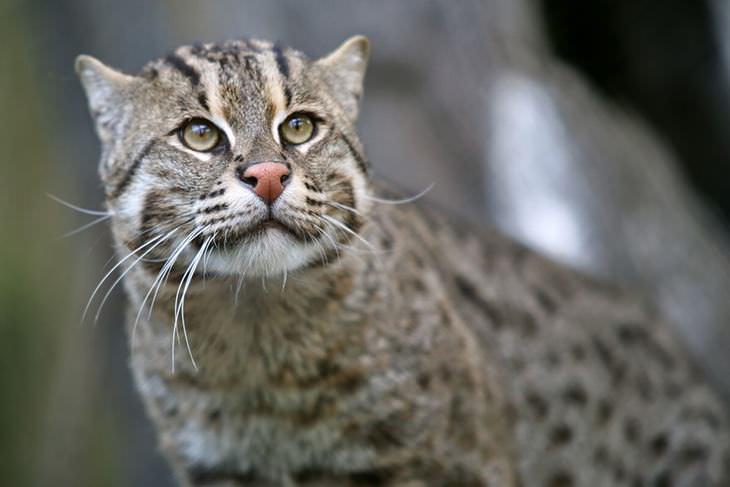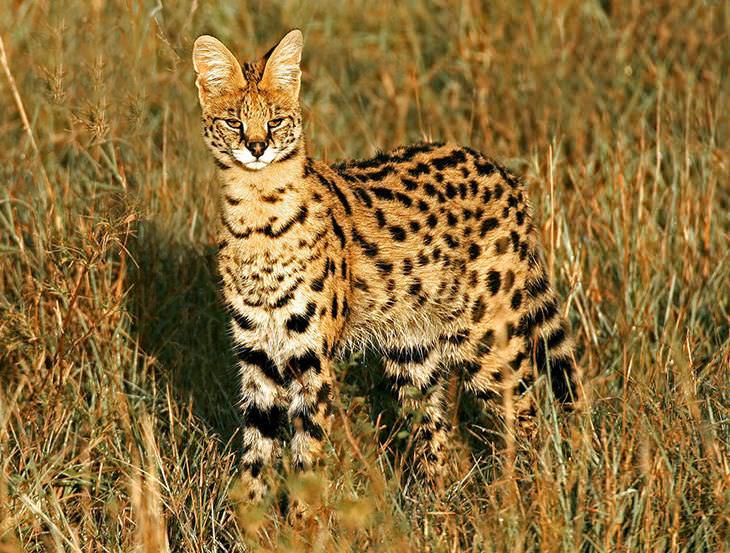Physical Characteristics: The sand cat is small and stocky, with short legs but a relatively long tail. Its fur is a pale, sandy, ocherous color.
Behavior: These wild cats can survive in extreme temperatures ranging from 23°F to 126°F , but when conditions get a little too much for them, they prefer to retreat to burrows. Surprisingly, sand cats can survive for months without water, relying only on their food, with small rodents being their primary prey.
Habitat: Sand cats are primarily found in Northern Africa and Southwest and Central Asia, residing in sandy and stony deserts. They tend to prefer flat terrain with sparse vegetation, but avoid bare sand dunes, due to a lack of food.
Canadian Lynx
Physical Characteristics: This cat's fur is dense and brown in color, with a silver tinge. Its fur changes in the summer months, becoming reddish. It has long legs and wide, furry feet, enabling it to travel through deep snow.
Behavior: For the most part, Canadian Lynxes tend to be nocturnal animals, hunting at night and resting by day.
Habitat: The Canadian lynx is found in northern forests across Canada and Alaska, but large populations can also be found in Montana, Idaho and Oregon in the USA.
Pallas' Cat
Physical Characteristics: The Pallas's cat is about the size of a domestic cat, with a stocky posture. Its fur is dense, making this wild cat look stout and plush.
Behavior: Pallas's cats are solitary. They spend their days in caves, rock crevices or marmot burrows, and emerge in the late afternoon to start hunting. They aren't fast runners, so they primarily hunt by ambush or stalking, taking cover amid low vegetation or rocky terrain.
Habitat: The Pallas's cat is predominantly found in the grasslands of Central Asia. Sadly, it has been classified as 'Near Threatened' by the IUCN (International Union for Conservation of Nature) due to prey base decline and hunting.
Caracal
Physical Characteristics: The Caracal's most distinctive feature is its long black tufts on the back of its ears, which are roughly 1.75 inches long. Its fur generally ranges from a tawny brown color to a brick red, with white fur on the abdomen, chin and throat.
Behavior: Like most cats, Caracals are also solitary animals, limiting their social interactions to mating season. These cats can be pretty feisty too - hissing, snarling, barking and growling.
Habitat: Caracals inhabit woodlands, savannas, semi-arid landscapes and scrub forests. They tend to prefer habitats with little rainfall.
Clouded Leopard
Physical Characteristics: In comparison to other cats, Clouded leopards have pretty short limbs. Their hind legs are longer than their front ones, enabling this cat to have incredible jumping and leaping capabilities.
Behavior: They prefer to live a solitary lifestyle, resting in trees during the day and hunting at night. Prior to making a kill, they stalk their prey, or wait for their prey to come to them.
Habitat: Found in the foothills of the Himalayas, these cats prefer open or closed forest habitats. Some have also been spotted in the northeastern and southeastern parts of Bangladesh. They have, however, been classified as a vulnerable species in 2008 by the IUCN. Sadly, its total population size is suspected to be fewer than 10,000.
Pampas Cat
Physical Characteristics: The Pampas cat is a relatively small cat - its body length ranges from 18 to 30 inches. Its coat comes in three main variants, ranging from a reddish-brown to a grayish tinge with dark brown spots.
Behavior: These wild cats have not been studied much and little is known about their hunting habits. However, there have been reports of them hunting rodents and birds at night. They are also known to hunt domestic poultry.
Habitat: These cats are native to Argentina, Chile, Bolivia, Peru and Ecuador. They're currently classified as 'Near Threatened' by the IUCN Red List as habitat conversion and destruction may cause the population to decline in the future.
Leopard Cat
Physical Characteristics: While the Leopard cat is roughly the size of a domestic cat, it is more slender, with longer legs and well-defined webs between its toes. Specimens from more southern populations tend to have yellowish-brown coats, but those that live further north tend to be silvery-grey.
Behavior: These cats are solitary, except during breeding season. Few are active during the day, with the majority hunting at night, stalking murids, tree shrews and hares.
Habitat: This small wild cat is native to South and East Asia. Though it has been assessed as 'Least Concern' by the IUCN, this cat is still threatened due to habitat loss and hunting.
Jaguarundi
Physical Characteristics: The Jaguarundi has short legs, an elongated body and a long tail. Its coat is uniform in color and usually varies from black to brownish-gray.
Behavior: Unlike most wild cat species, the Jaguarundi is primarily active during the day, as opposed to evenings or at night. They often lie in trees, but hunt on the ground. For prey, Jaguarundi typically catch a mixture of rodents, small reptiles and ground-feeding birds. They have also been observed killing larger prey such as rabbits and opossums.
Habitat: The Jaguarundi is typically found in Texas and Mexico, with some also spotted as far south as Argentina. They prefer to reside in lowland brush areas, with water nearby.
Fishing Cat
Physical Characteristics: Fishing cats are twice the size of a domestic cat, and have a stocky, muscular build with short-to-medium legs. Their fur is coarse and olive-gray in color with dark spots arranged in horizontal streaks running along the length of their bodies.
Behavior: As its name implies, these cats feed on fish and it should also come as no surprise that they feel very much at home in the water. In fact, they can swim long distances - females have been reported to swim areas of 4 to 6 km, while males can swim 16 to 22 km.
Habitat: Fishing cats are predominantly found in the Terai region of the Himalayan foothills in India and Nepal, and can also be spotted in swamps and marshy areas in Bangladesh and Sri Lanka.
Serval
Physical Characteristics: The Serval is a medium-sized cat, measuring 23 to 36 inches long. It is a strong yet slender animal with long legs, making it one of the tallest cats around.
Behavior: The Serval is mainly a nocturnal hunter to avoid being detected by larger predators during the day. While it predominantly hunts rodents, the Serval is an opportunistic predator, with a diet that includes birds, hares, reptiles, insects, fish and frogs. It is known to travel as much as 3 to 4 km each night in search of food.
Habitat: The Serval is native to Africa and is predominantly found in the Sahara region, residing in mountainous area at elevations up to 9,800 feet.

